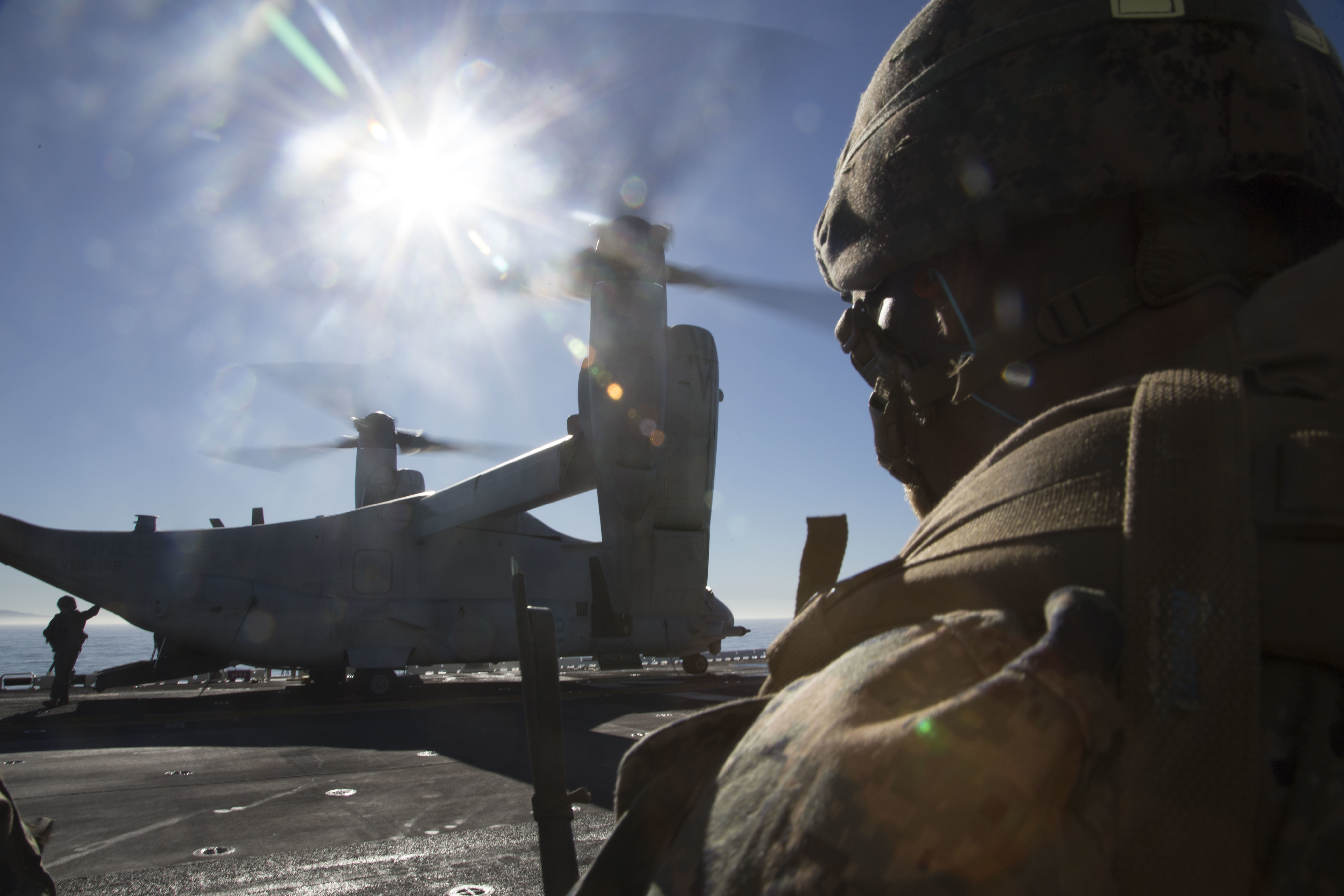By Major James Everett, Head of the Assault Support Department at MAWTS-1
The world has never been more connected. Or more volatile. Conflict and unrest are a pandemic, rising amid a wave of nationalism, autocratic rulers, religious fanaticism, and dwindling economic opportunity.
The vast majority of us grew up in a Fleet Marine Force that understood and constantly trained to fight the insurgencies that ripened in these uncertain environments. And we’ve become quite proficient at it. However, over the past fifteen years, threat of another Great Power Competition has grown quietly in the background.
The first overt signal came in 2014 when Russia invaded, and subsequently annexed, the Crimean Peninsula in Ukraine, flexing its muscle in dramatic fashion for the first time since the collapse of the Soviet Union in 1991.
China has been less conspicuous, but its rise in influence poses the greater threat. Using its economy as a subtle national instrument of power, it has quietly expanded across the globe with symbiotic (if biased) relationships that allow it to leverage regional governments with the promise of economic support. Now, having been content to watch China’s rise and its concurrent development and maturation of a modern military, we are faced with a force of devastating potential.
This problem set is wildly different than anything that we, as planners and operators, have ever faced before.
So how do we, as Weapons and Tactics Instructors, prepare ourselves and our Squadrons for this fight?
With three techniques: brilliance in the basics, increased complexity of our tactical training, and an enhanced comfort with discomfort.
Brilliance in the Basics
This is an often-bandied phrase that sets great units apart from everyone else. It begins with scenario design, includes mentoring during the planning process, thorough briefing, purposeful execution, and detailed and constructive debriefing. Complacency is the enemy here. We, as instructors and leaders, cannot allow ourselves to be distracted from this process by our ground jobs—we must be all-in, all the time, and challenge everyone else in our unit to keep up. These fundamentals will ultimately be what lead us to success in the next conflict.
Increased Complexity of our Tactical Training
If we don’t increase the complexity of our tactical training, we will end up being very well prepared for the wrong fight. Over the past twelve months, the Fleet has made great strides in improving the quality of our scenarios: the integration of the MAG-29 S-2 shop with their squadrons has been particularly fruitful in this regard.
Here in Yuma, the Heavy Metal Division has leaned into the project with zeal….. Maj Zasadny Maj Charvet, and Maj Allen have worked diligently over the past four months to completely re-design the CH-53 WTI Specifics flight week into a Distributed Operations scenario that spans over 600 nautical miles and involves peer threat systems and realistic missions in a high-threat environment….
Enhanced Comfort with Discomfort
Finally, let’s get comfortable with discomfort. In June 2020, HMH-461 conducted a multi-day ADGR site that highlighted the utility, effectiveness, and resilience of the CH-53 and its aircrew. In the words of the XO, “Mongo” Horne: “It was awesome. . .but it was hot.”
This type of event is an outstanding example of a service that we can provide without any external support (the Ironhorse was, instead, providing support!). Their evolution mimics what we may be expected to do in the peer fight anywhere from INDOPACOM to Western Europe: depart the ship, land and ADGR, possibly RON, and meet the ship somewhere else all while minimizing emissions, possibly conducting HAAR, and remaining survivable within the enemy MEZ throughout.
Discomfort doesn’t just apply to the physical discomfort of the field either. It applies especially to us, the trainers, as we prepare to step outside of our comfort zones as we design training plans and scenarios.
Taking this uncomfortable step from the familiar COIN environment to the unfamiliar Peer Fight is essential in order to train ourselves and our Aircrew and to ensure that our Squadrons are ready to go forward and defend the Nation’s interests against any adversary in any place at any time.
Featured Photo: U.S. Marines with Company C, Battalion Landing Team, 1st Battalion, 4th Marine Regiment, 1st Marine Division, wait to board an MV-22B Osprey assigned to Marine Medium Tiltrotor Squadron (VMM) 166, Marine Aircraft Group 16, 3rd Marine Aircraft Wing, aboard the USS Essex (LHD 2), Oct. 23, 2017, during Exercise Dawn Blitz. Company C conducted an airfield seizure on San Clemente Island, California, as part of expeditionary advanced base operations training. Dawn Blitz 17 provides an opportunity to train Navy and Marine Corps counterparts in establishing scalable and agile expeditionary advanced bases capable of expanding littoral maneuver capabilities. (U.S. Marine Corps photo by Lance Cpl. Roderick Jacquote)
EABO from SldInfo.com on Vimeo.


